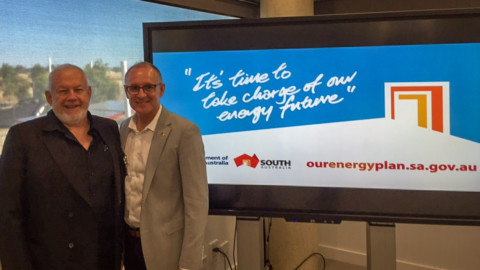As part of an industry-first joint initiative between Australian developer Mirvac and the Clean Energy Finance Corporation (CEFC) first and new home buyers in Sydney and Brisbane will have access to state-of-the-art clean energy homes of the future.
In an Australian clean energy first, Mirvac is working with the CEFC to embed a range of clean energy initiatives as part of the base build in three new master planned residential communities.
The communities will include more than 300 family homes, each with built-in solar and battery storage systems, as well as high-grade insulation, LED lighting and energy efficient appliances.
The ready-to-operate 5.1kW rooftop solar systems, paired with 10kWh battery systems, will provide residents with a clean energy alternative sufficient to meet up to 90 per cent of a typical households’ energy consumption.
The CEFC is committing up to $90 million in debt finance as part of Mirvac’s broader financing of the master planned communities, which are subject to final development approval.
“The CEFC’s finance will mean this clean energy technology is already included in the homes during construction, at no additional cost to the home buyer. This will deliver significant and ongoing long-term benefits to families and residents,” CEFC CEO, Ian Learmonth said.
“Australian homes have an average lifespan of almost 50 years. By incorporating renewable energy and energy efficiency measures from day one, these new homes can provide a lifetime of lower energy costs and lower carbon emissions for their residents.
“Australians are world famous for our adoption of rooftop solar. When we use solar energy alongside battery storage and other clean energy technologies, we can significantly cut household reliance on grid energy, giving homeowners more control over their energy consumption and their carbon footprint.”
Mirvac Group General Manager, Sustainability and Reputation, Sarah Clarke, said, “Mirvac is proud to partner with the CEFC as we deliver against our bold target to be net positive in energy and water by 2030, and provide technology in our homes which helps people towards zero bills living.
“Cost of living and environmental sustainability are issues our customers really care about, and this is another great example of how Mirvac is focused on providing more affordable living options.”
Mirvac will provide further project details as the planning approvals are finalised across the master planned communities.
While residential buildings account for as much as half of all emissions produced across Australia’s built environment, homeowners are increasingly proactive in switching to clean energy technologies to save energy and reduce emissions.
The Clean Energy Regulator registered a surge in new residential solar PV in 2017, with an average 9500 rooftop panels installed every day, coinciding with an increase preference for larger capacity systems.
According to Bloomberg New Energy Finance, Australians invested in more than 1GW of new rooftop solar in 2017 – adding the equivalent of a small-scale coal fired power station to the nation’s energy supply. Home battery installations also increased substantially, with an additional 3147 systems installed in 2017.
But even with these dramatic increases, only 18 per cent of Australian homes have rooftop solar, and only 0.1 per cent are benefitting from battery storage.
CEFC property sector lead, Chris Wade, said the goal is to see these built-in sustainability measures become the ‘new normal’ for Australian homes.
“Smart building design, combined with solar and battery storage packages, can give home owners greater control over their energy use and can pave the way for energy self-sufficiency,” Mr Wade said.
“As a key part of this investment, we will work with Mirvac to monitor energy use and track energy savings, so we can share insights into the positive impacts of these technologies on day-to-day energy consumption. We see this as building the foundation of an ongoing relationship with Mirvac to enhance clean energy standards in the residential housing sector.”
Construction is expected to start in 2018 with the first homes ready for purchase and occupation by late 2019.
















